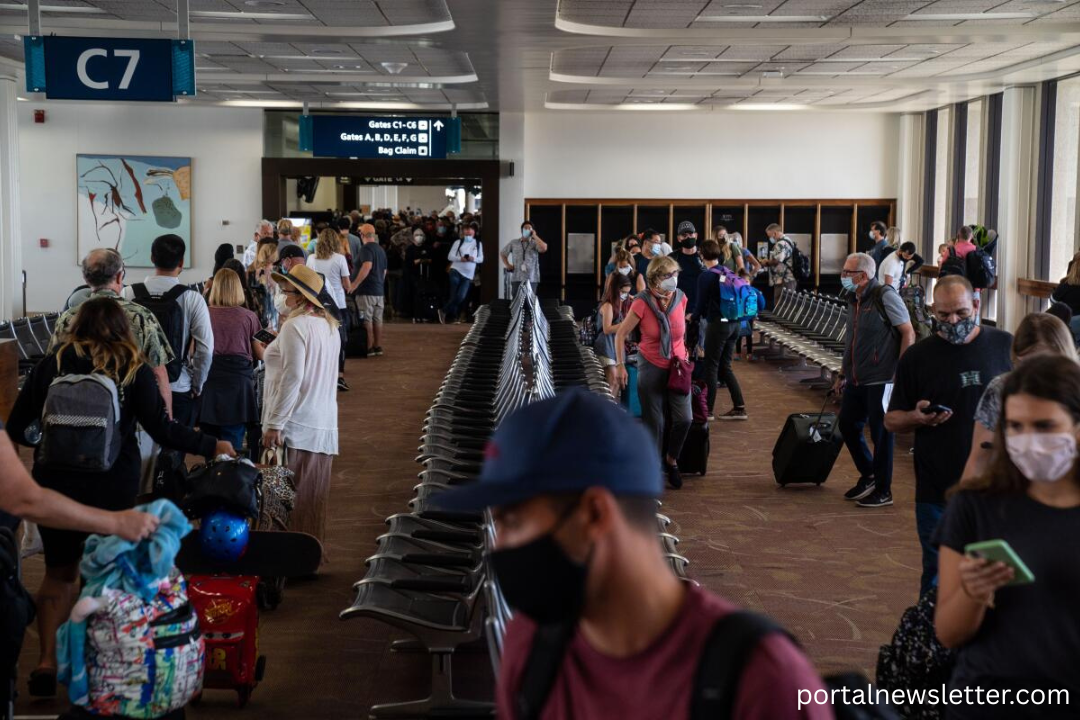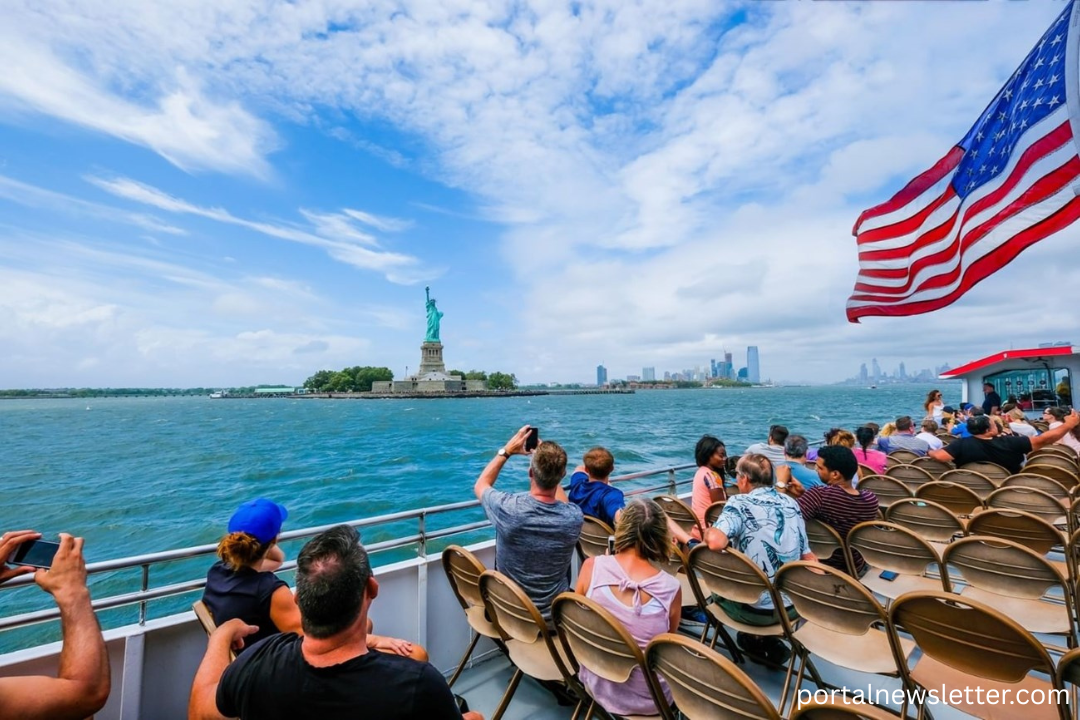The United States has long been a prime destination for international travelers, drawing millions of tourists each year with its diverse attractions, cultural landmarks, and economic opportunities. However, recent trends indicate a noticeable decline in the number of international tourists visiting the U.S. This shift in tourism patterns has raised questions about the underlying causes and what it means for the American economy. Despite the decline in international visitors, Americans are continuing to travel abroad in significant numbers. Understanding the factors behind these changes in global travel dynamics is essential for both the tourism industry and policymakers.
The Decline in International Tourists to the U.S.
Several factors contribute to the decline in international tourists to the U.S., including political, economic, and logistical challenges. These shifts in travel behavior have decreased the number of foreign visitors arriving in the country.
Political Climate and Travel Restrictions
Political factors have played a significant role in deterring international tourists from visiting the U.S. In recent years, changes in U.S. immigration and visa policies have made it more difficult for some travelers to enter the country. Stringent visa requirements, travel bans, and heightened border security measures have created obstacles for tourists, especially from countries affected by these policies. These regulations have discouraged potential visitors, leading to a decrease in tourism numbers.
Furthermore, the global health crisis of the past few years, such as the COVID-19 pandemic, imposed widespread travel restrictions and entry requirements that affected international tourists. Although restrictions have eased in many parts of the world, some travelers may remain hesitant about visiting the U.S. due to lingering concerns about health risks and potential future limits.
Economic Factors and Exchange Rates
Economic conditions, both in the U.S. and in other countries, have influenced the number of international tourists visiting the country. The rising cost of travel, driven by inflation and fluctuating exchange rates, has made international trips less affordable for many potential visitors. A weaker foreign currency against the U.S. dollar makes travel to the U.S. more expensive for tourists, reducing their ability to spend money once they arrive.
Many tourists from countries experiencing economic instability or inflationary pressures are increasingly looking for more affordable destinations. As a result, some international travelers are opting to visit other countries where their money stretches further, leading to a decline in international visitors to the U.S.
Competing Destinations and Changing Preferences
The global tourism landscape has changed in recent years, with other countries becoming more attractive options for international tourists. As global travel has become more accessible, travelers are exploring new and emerging destinations that may offer more affordable or less crowded alternatives. Countries with fewer travel restrictions, attractive incentives, or better-value tourism packages are becoming increasingly popular with international visitors.
Moreover, shifting preferences among tourists also play a role in declining numbers in the U.S. Many international travelers are seeking experiences that align with changing interests, such as eco-tourism, adventure travel, or cultural immersion in less commercialized locations. These preferences have led some tourists to look beyond the U.S. in favor of other destinations that cater to these growing trends.
The Continued Growth of Americans Traveling Abroad
Despite the decline in the number of international tourists visiting the U.S., American travelers are still venturing abroad in large numbers. The pandemic, which severely disrupted global travel, has also led to a resurgence in international travel among U.S. residents as restrictions ease. Several key factors contribute to the continued popularity of international travel for Americans.
Expanding Global Travel Opportunities
One significant reason for the rise in Americans traveling abroad is the expanding availability of affordable international flights and travel packages. Airlines have worked hard to offer competitive prices, making overseas destinations more accessible for Americans seeking a change of scenery. As a result, more Americans are taking advantage of lower airfare and increased global connectivity to explore international destinations.
Moreover, many international destinations offer value for money in terms of lodging, food, and experiences, making them attractive options for budget-conscious travelers. This accessibility and affordability are key drivers of increased international travel among U.S. residents.
Changing Attitudes Toward Travel
In recent years, U.S. residents have developed a more global mindset, seeking experiences beyond traditional tourist spots. Many Americans are interested in exploring new cultures, cuisines, and lifestyles in countries they might not have considered previously. Social media and travel influencers also play a significant role in sparking curiosity and inspiring international travel. As more Americans share their travel experiences abroad, others are motivated to visit similar destinations.
Expanding Options for Remote Work and Leisure Travel
The rise of remote work has given many Americans the flexibility to travel while maintaining their jobs. With the ability to work from anywhere, many U.S. residents are taking the opportunity to explore other parts of the world while working remotely. This trend has led to an increase in what’s commonly referred to as “leisure” travel—combining business and leisure—where Americans balance work commitments with sightseeing and relaxation in international destinations.
The Impact of Declining International Tourism on the U.S. Economy

The decline in international tourists has a direct impact on the U.S. economy, particularly in industries reliant on tourism dollars. The hospitality sector, including hotels, restaurants, and transportation services, is one of the hardest-hit industries. According to the U.S. Travel Association, the tourism industry contributes significantly to the U.S. economy, generating billions in revenue each year. A decrease in international visitors can result in lower spending in local economies, especially in major tourist cities like New York, Los Angeles, and San Francisco.
In addition to direct spending, international tourists also contribute to job creation and tax revenue. When fewer international visitors come to the U.S., job opportunities within tourism-related sectors decrease. This shift can lead to a ripple effect across various industries, including retail, entertainment, and transportation.
Regional Disparities
While some parts of the U.S. continue to see steady numbers of international tourists, others are more heavily impacted by the decline. Major cities and tourist destinations that rely heavily on foreign visitors may experience more significant downturns in tourism-related revenue. Areas that attract business travelers or international conventions may also feel the effects more acutely.
Impact on Long-Term Tourism Growth
The decline in international tourists poses challenges for long-term tourism growth in the U.S. If trends continue, it could lead to a re-evaluation of U.S. tourism policies, visa processes, and marketing strategies. The U.S. may need to take steps to attract more international visitors and ensure it remains competitive with other global destinations.
Frequently Asked Questions (FAQ’s)
Why is international tourism to the U.S. declining?
The decline in international tourists to the U.S. can be attributed to factors like stricter visa policies, political tensions, the impact of the COVID-19 pandemic, and increasing competition from other countries offering more attractive travel packages.
How have visa and immigration policies impacted tourism?
Tighter visa requirements and changes in immigration policies have made it more difficult for some international tourists to visit the U.S., discouraging travelers from certain countries from making the trip.
How does the U.S. economy affect international tourism?
Economic factors such as exchange rates, inflation, and the cost of travel affect the number of international tourists visiting the U.S. A stronger U.S. dollar or economic instability abroad can make it more expensive for foreign visitors to travel to the U.S.
Are Americans traveling more abroad despite the decline in international tourism?
Yes, while international tourists to the U.S. are declining, many Americans are traveling more abroad. Factors like the increased affordability of international flights and the rise of remote work have contributed to this trend.
How do competing global destinations affect U.S. tourism?
As more countries offer appealing travel packages and fewer restrictions, international tourists are increasingly choosing alternative destinations over the U.S., which has contributed to the decline in tourism to America.
What role does the COVID-19 pandemic play in tourism trends?
The COVID-19 pandemic disrupted global travel, causing travel restrictions that limited the ability of international tourists to visit the U.S. Although restrictions have eased, some travelers are still hesitant to return due to lingering health concerns.
What are the long-term implications of fewer international tourists?
A decline in international tourists can reduce revenue for industries dependent on tourism, such as hospitality, transportation, and retail. It may also result in job losses and slower economic growth in cities reliant on tourism.
Will the U.S. government take steps to boost international tourism?
In response to declining international tourists, the U.S. government may implement measures such as easing visa requirements, promoting tourism, and investing in infrastructure to make the country more attractive to international visitors.
Conclusion
The decline in international tourists visiting the U.S. reflects a broader shift in global travel patterns, influenced by a combination of economic, political, and social factors. While some of these factors, such as changing consumer preferences and the rise of competing destinations, maybe long-term trends, others, like visa policies and economic instability, may change over time. On the other hand, large numbers of U.S. residents are continuing to travel abroad, driven by a combination of affordable travel options and shifting attitudes toward global exploration. As the tourism landscape evolves, U.S. policymakers and travel industry professionals must adjust their strategies to adapt to the changing needs of international tourists and domestic travelers alike.


